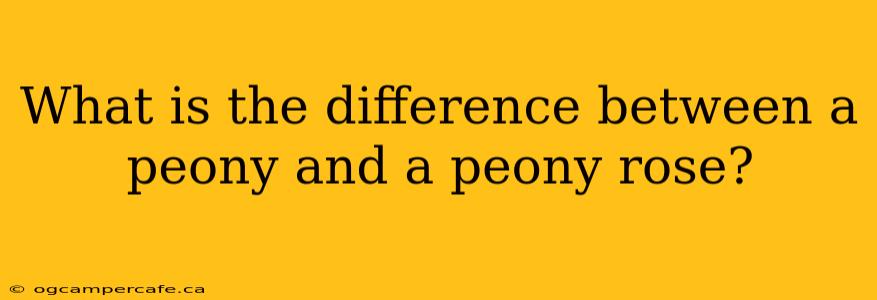The question of whether there's a difference between a peony and a "peony rose" often arises due to a bit of botanical confusion and charmingly misleading marketing. The simple answer is: there is no such thing as a peony rose. The term is used colloquially, often to describe a rose with peony-like characteristics, but botanically, they are distinct plants.
Understanding the Peony
Peonies (genus Paeonia) are herbaceous perennials known for their large, showy blooms and lush foliage. They belong to their own distinct family, Paeoniaceae. Peonies are prized for their:
- Flower Structure: Peonies typically have multiple layers of petals, often creating a full, rounded bloom. The number of petals can vary depending on the cultivar, but they don’t have the characteristically high petal count often associated with some rose types.
- Fragrance: Many peony varieties possess a strong, sweet fragrance, contributing to their popularity.
- Growth Habit: They grow as bushy perennials, with stems arising from the ground each spring.
- Leaf Shape: Peonies have distinct, deeply lobed leaves that provide visual interest even when not in bloom.
Understanding the Rose
Roses (genus Rosa) belong to the Rosaceae family, a much broader group of plants. They are known for their incredible diversity in:
- Flower Structure: Roses exhibit a vast range of flower forms, including single, semi-double, double, and multi-petaled blooms. Some cultivars, especially those bred to resemble peonies, can have a very full and rounded appearance, leading to the common misconception.
- Fragrance: Rose fragrance is highly variable depending on the cultivar, with some being intensely fragrant and others almost scentless.
- Growth Habit: Roses can be climbing, shrubby, or groundcover plants, displaying a much wider range of growth habits than peonies.
- Leaf Shape: Rose leaves are typically compound, meaning they consist of several smaller leaflets.
Why the Confusion?
The confusion around "peony roses" arises primarily from the breeding of roses that mimic the full, lush appearance of peony flowers. Rose breeders have skillfully developed cultivars with a high petal count and a rounded bloom form that visually resembles a peony. These roses are often marketed with descriptive names that include "peony" to capture the visual appeal associated with the peony flower. However, this is purely a marketing tactic to highlight a desirable aesthetic, not a botanical classification.
Key Differences Summarized
| Feature | Peony | Rose |
|---|---|---|
| Genus | Paeonia | Rosa |
| Family | Paeoniaceae | Rosaceae |
| Flower Form | Typically multiple layers, full | Highly variable, some resemble peonies |
| Growth Habit | Herbaceous perennial | Variety of growth habits |
| Leaf Shape | Deeply lobed | Compound leaflets |
In conclusion, while some roses might visually resemble peonies, they remain distinct botanical species. The term "peony rose" is a descriptive marketing term, not a botanical classification. Understanding the unique characteristics of each plant helps clarify the distinction between these two beloved garden flowers.
